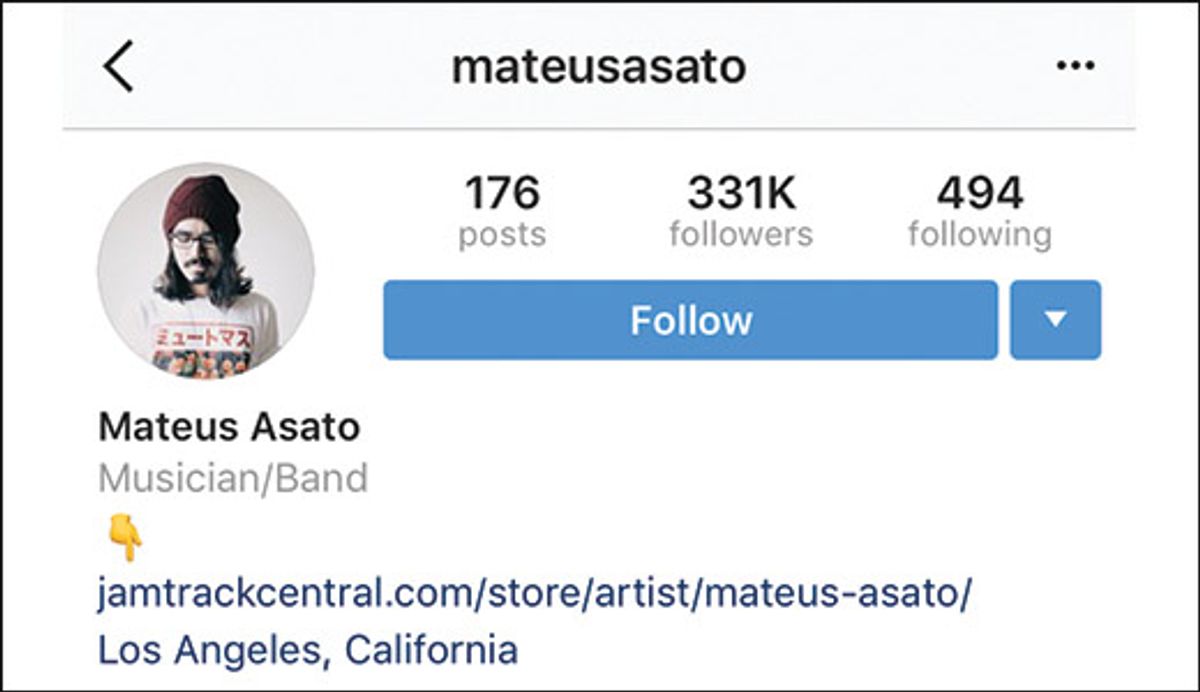
Talent in the raw thrives, just a thumb click away.
Personal experience confirms some of what these eggheads are preaching. I've worked as a music director in television for the past 15 years. In the last five years, roughly one-third of the charts I've written were I–V–VI–IV chord patterns. Don't get me wrong. I'm not criticizing the wildly talented artists I work with. I'm just saying there's an undeniable trend in modern hit songs.
I just completed my ninth year leading the band for the CMT Music Awards and can say with some pride that my stage is always track-free, truly live live music. It's kind of a big deal, because a lot of so called “live" music you see in a concert or a broadcast is accompanied by prerecorded tracks. Modern recordings are deeply layered with armies of guitars, loops, background vocals, and seductive ear candy. There's a lot of pressure to sound equally big live, so the solution is to add tracks to your live instruments. In Nashville, we call it Hillbilly Vanilli. A track gives you perfection, but perfection is inhuman, and eventually we're going to want something natural we can relate to.
There's a Japanese concept called wabi-sabi that celebrates the imperfect, impermanent, and incomplete beauty in our naturally imperfect world. Let me put wabi-sabi in terms you'll understand: A 1954 Les Paul goldtop is prized because of (not despite) its cracked finish and green patina. Wabi-sabi is not auto-tuned, quantized, Photoshopped, or Botoxed. Wabi-sabi is about nature, and nature is unpredictable—not linear or symmetrical, but simultaneously growing and decaying. In our current culture that wants to straighten every crooked line, we're mesmerized more than ever by nature doing its own thing.
Maybe that's why, for the past year, I've discovered more music on Instagram than anywhere else. Instagram is a great source for truly live, un-retouched performances. I'm sure there are some uptight artists who employ a hair and makeup team, an engineer, auto-tune, and the full vanity production in every Insta-post, but most people probably approach it like I do: put on some pants, pick up a guitar, play, and let the notes fall where they may.
When I'm sitting around the house playing guitar and my infant daughter starts dancing along, Amy films it and posts it on the spot. When I'm on tour and our drummer Donnie Marple starts banging out a warm-up on a green-room couch, I'll join in, film, and post. When I'm deep into a 4 a.m. buzz mixing hippie pedal steel and uncontrollable analog delay with a recording of Marty Stuart or John Mayer, I post it before I can sober up and have the good sense to keep it to myself. Replete with clams, my stuff is so wabi-sabi you couldn't find a straight line or right angle in it to save your life. Yet, I find it strangely gratifying rather than embarrassing.
Speaking of John Mayer, Instagram is where I learned that when he's not playing music, he's unwinding by playing music, working up Bill Evans-style piano. Joe Bonamassa posts videos several times a week that feel like he's my friend, sitting right across from me, blowing out these killer lines while demonstrating the tonal nuances of another gem from a recent guitar safari. Check out @John5official to see the Telemaster slaying it in his pajamas.
But besides world-renowned musicians, it's inspiring to discover players like Mateus Asato, a 23-year-old Brazilian who is a master of the one-minute arrangement. Every post has a structure, with a beginning, middle, and end, and such perfect economy of notes they feel like musical haiku. Asato absolutely shreds, but his arrangements and melodic sensibilities will crush your soul with their beauty. There's Sweden's Emil Ernebro, who effortlessly blows through complex, funky fingerstyle songs perfectly in step with his racing metronome. I learn something every time I watch a post from my amigos Andy Wood, J.D. Simo, and Greg Koch—all virtuosos on everything from metal to bluegrass. There are compilation accounts like @ambientnotes and @pickupjazz, which scour Instagram and repost the best. I discover killer players every week that make me wonder why people keep hiring me with all this talent out there.
For decades, there were gatekeepers like record labels, radio, and TV that decided what we got to listen to. Now we can see and hear music in all its ragged, wabi-sabi glory from anybody with access to a cellphone and one bar of connectivity. Enjoy the imperfection while you can. Nothing lasts.
